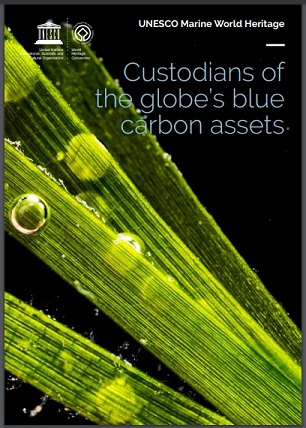
Over the last decades scientists have discovered that seagrass meadows, tidal marshes, and mangroves – “blue carbon” ecosystems – are among the most intensive carbon sinks in the biosphere. By sequestering and storing significant amounts of carbon from the atmosphere and ocean, blue carbon ecosystems help mitigate climate change. But conversion and degradation of these ecosystems can also release billions of tons of CO2 and other greenhouse gases into the ocean and atmosphere and contribute to global warming. UNESCO’s World Heritage List includes the world’s most iconic marine protected areas, recognized by the international community for their outstanding biodiversity, beauty, geology and natural habitats. This report is a first assessment of blue carbon assets across the UNESCO marine World Heritage sites, revealing their outsized role as custodians of globally relevant blue carbon resources, including the largest areas of seagrass and mangroves in the ocean. Despite representing less than 1% of the global ocean area, marine World Heritage sites and their immediate surrounding areas for which data was available comprise at least 21% of the global area of blue carbon ecosystems and 15% of global blue carbon assets. These carbon stores are equivalent to about 10% of global greenhouse gas emissions in 2018.














